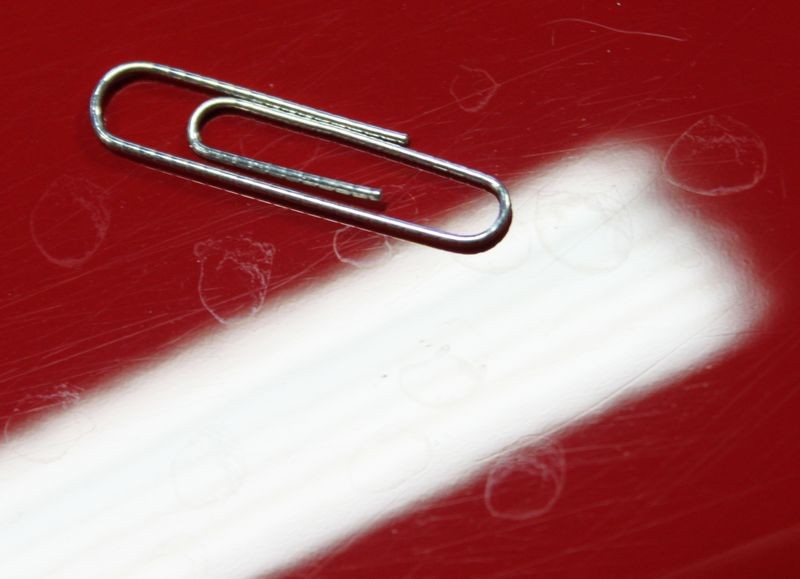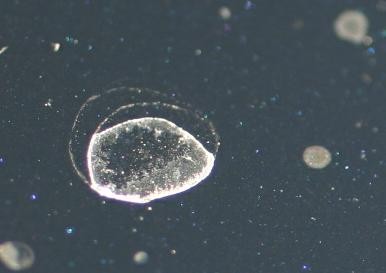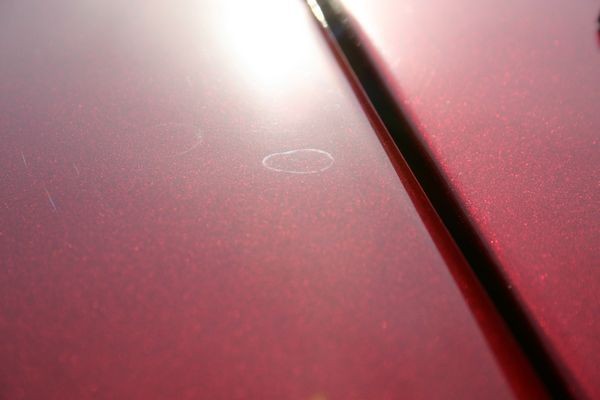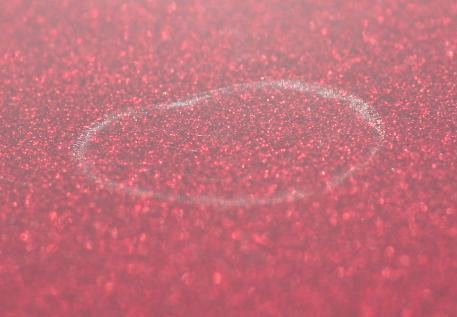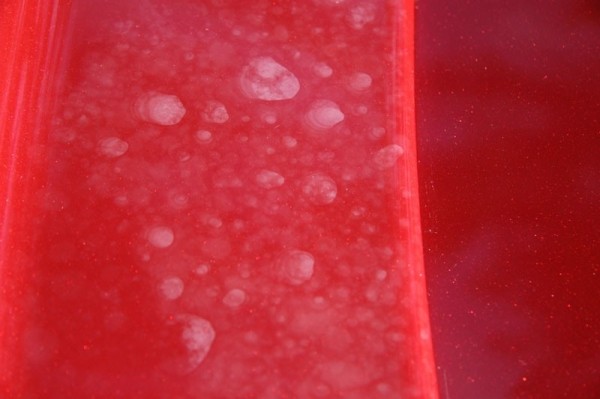Hey Mike
What product would you recommend for that? The sprinkler water spots.
Kind of depends on what the water did to the coating or the paint. Some water spots, usually called Hard Water Spots, which are dissolved minerals in the water that after the water dries, leaves crusty looking particles on your car's paint, these can often be wiped-off or washed off. In really bad cases, chemically removed with products like Optimum MDR or Mineral Deposit Remover.
If the water was so corrosive that after washing or wiping the paint clean you can see an imprint ring or a crater etching - then you're going to have to use a polish and possibley a compound to abrade the surface and level it to make these rings or craters visually and physically disappear.
Imprint Rings is a term I coined for the industry. Here's my article on this topic.
Imprint Rings - A specific type of water spot on car paint by Mike Phillips
Here's a picture from the above article.
If you click the link and read the article and look at the pictures you'll see I wiped the paint clean and the imprint rings REMAINED - this means the paint has been etched and will require some form of mechanical abrasion to fix.
These terms are kind of simple but I needed terms to describe the different types of water spots and because I'm a detailer that "writes" - I take the liberty to come up with my own terms for the car detailing industry and then use them. (anyone can do this, there's no law against writing)
3 - Types of Water Spots - Type I, Type II and Type III
Type I - Mineral Deposit or Hard Water Spot
Type II Water Spots
Type II Water Spots are actual etchings or craters in the paint because something corrosive in a water source has landed on the paint and was not removed before a portion of the paint was eaten or dissolved by the corrosive substance.
I took this photo myself when I helped Alex Fong from Corvette Forum remove a zillion Type II Water Spots out of the clear coat finish on his Corvette.
Photo Courtesy of MeguiarsOnline.com
Here's a close-up of the same photo, if you look closely you can see the edges are angled downward as this is an actual etching "into" the clear paint.
Type III Water Spots - Chemically faded paint
Type III Water Spots are spots that look faded or dull and are found primarily found on
single stage paints after a water source lands on and then pools on the paint and is usually left to dwell on the surface for some measure of time before it evaporates or is wiped-off the surface.
Modern clear coat paints tend to be harder and impermeable, that is non-porous, so liquids don't penetrated easily and thus stain spots tend to be topical, that is only affect the very upper surface and are easier and safer to remove with a compound or polish.
Older single stage paints tend to be soft and permeable, or porous, it's common for liquids to penetrate into the paint and stain the paint below the surface. Removing stains out of single stage paints can be risky because in order to remove the stains you have to abrade the paint and if the stains penetrated deep then you risk removing too much in an effort to try to remove them completely.
Not always fun explaining to people what the problems are....
Now as to what products?
If the crusty mineral deposits can be wiped or washed off than all you need is a car wash or quick detailer.
If the "spots" are actually
NOT spots but some form of
ETCHING in the paint, this means the etching is in the coating and through the coating and now in the paint - then you'll need a product that uses great abrasive technology and then you'll have to abrade or polish the paint.
Polishing abrades the surface and removes a little paint. The effect this has is to
LEVEL the surface and thus make the spots or imprint rings visually disappear.
Next time the sprinklers go off you'll likely have the problem again.
This is where a discussion on
WATER BEADING comes into play. 99.9% of the car enthusiast population
LOVES to see water beading on their cars paint. It looks cool. :laughing:
Me? Been there done that. I'm a veteran of the
NXT versus Zaino Wax Wars.
Water beading is bad for paint - it causes water spots and worse water spot etchings or imprint rings. This causes you to have to abrade the paint. Here's the problem - paint is THIN. At least factory paint is thin and that's what most of us have on our daily drivers.
Kind of a crazy world. I was at Meguiar's when the
corporate decision was made to make everything BEAD WATER and the reason why was because the fact is you canot change perception.
Perception is reality. Water beading is the perception of two things,
- Protection
- Longevity
But as you are experiencing, water beading doesn't mean protection if you are seeing water spots
IN your car's paint. But... the unwashed masses are always correct. :laughing: So now days - look how much focus and importance is put on water beading.
It will never change either. Perception is reality.
What's the answer? See my answer to the other part of your question below.

